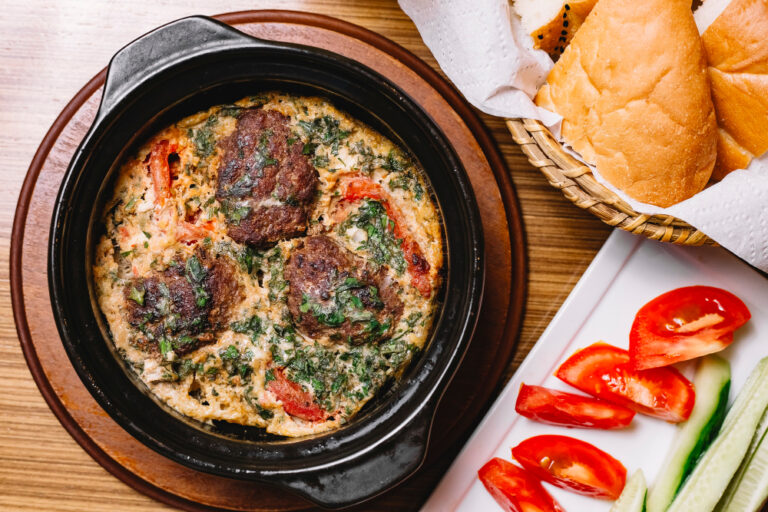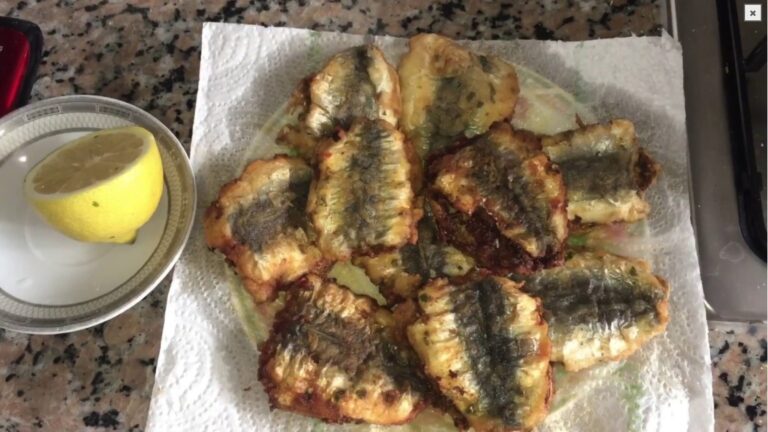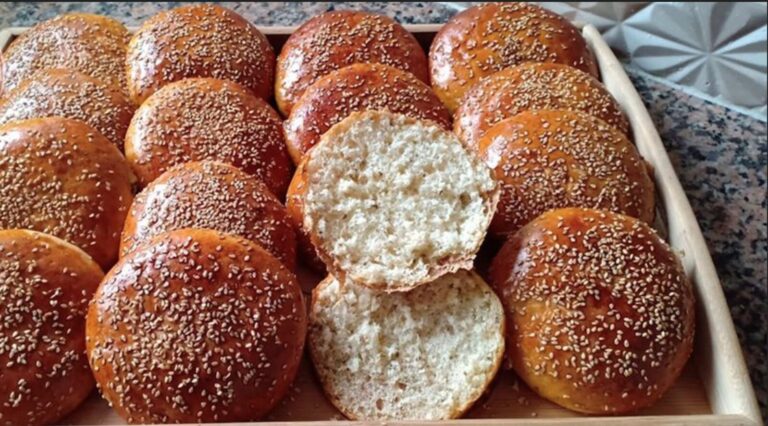
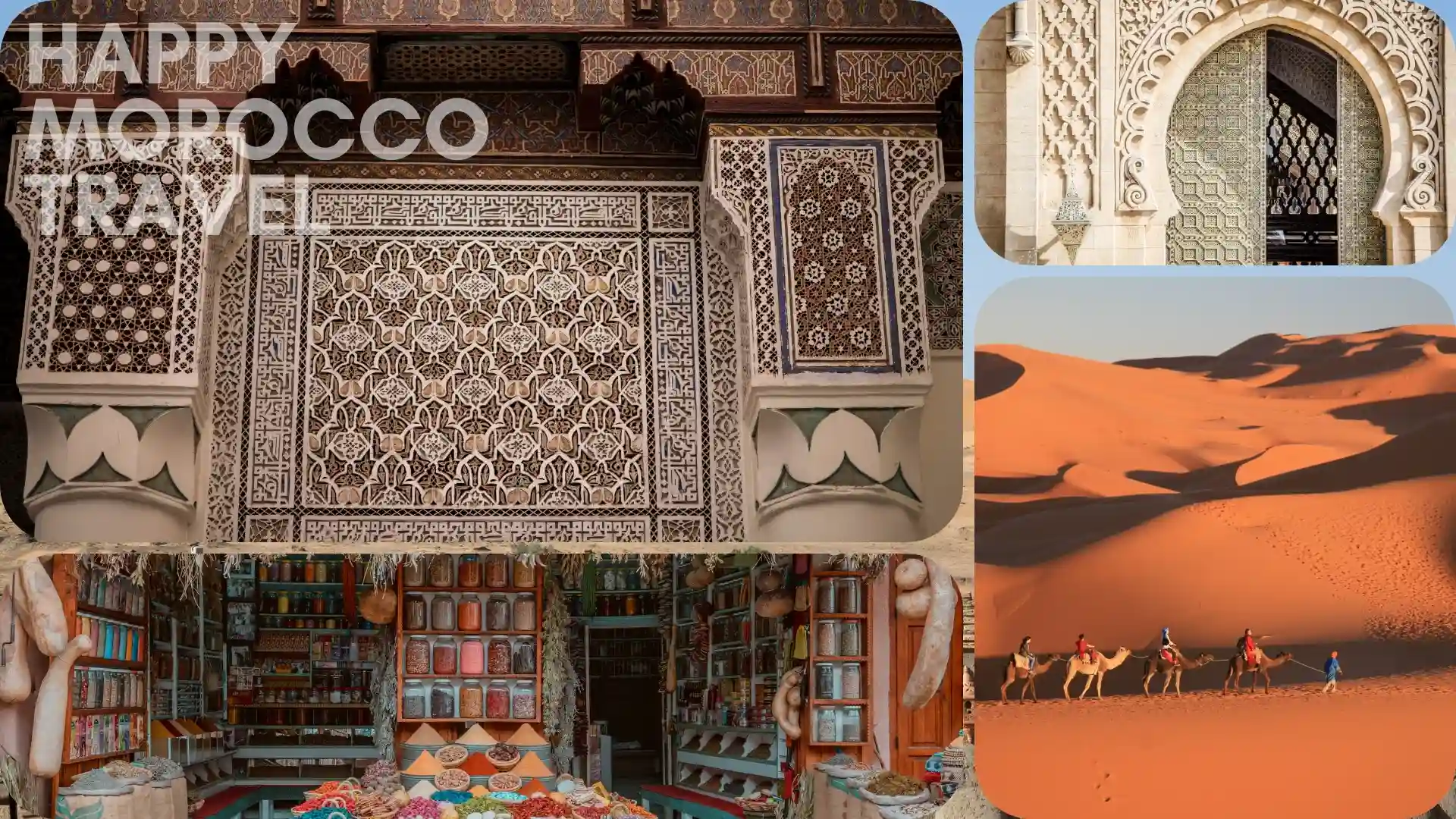
The Ultimate Guide to Morocco: Complete Travel Guide 2025
Morocco, a captivating North African kingdom where ancient traditions seamlessly blend with modern aspirations, offers travelers an unparalleled journey through diverse landscapes, rich history, and vibrant culture. This comprehensive Morocco travel guide serves as your definitive resource for understanding, planning, and experiencing everything Morocco has to offer.
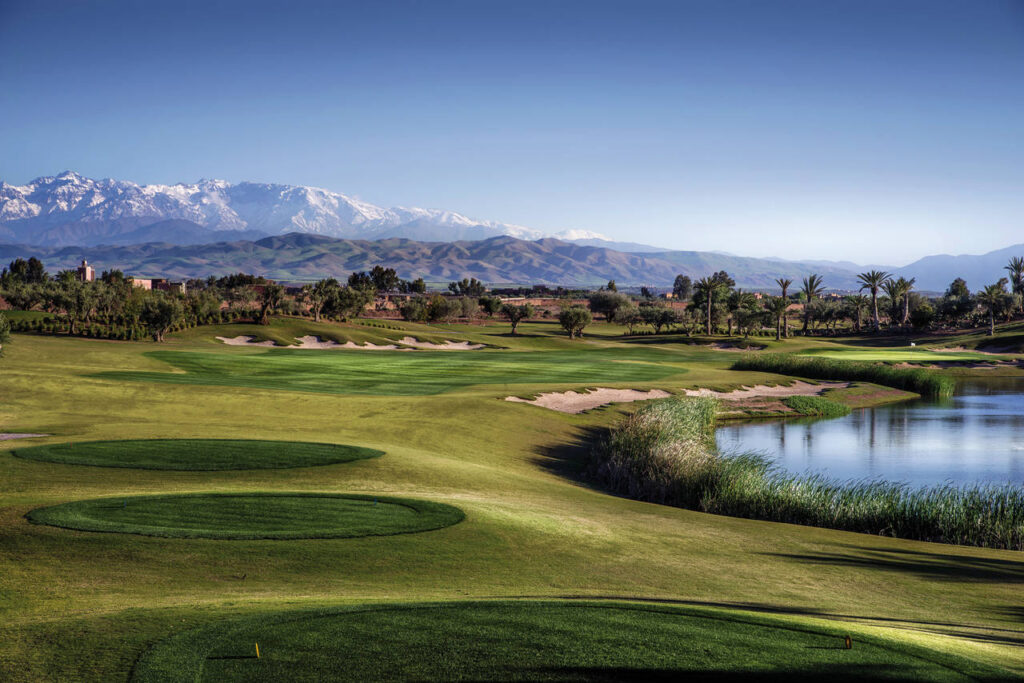
Introduction to Morocco Travel
Morocco stands as one of Africa’s most accessible and enchanting Morocco travel destinations, offering visitors a sensory feast of imperial cities, bustling souks, pristine beaches, snow-capped mountains, and endless desert landscapes. Located at the crossroads of Africa and Europe, this constitutional monarchy has preserved its authentic character while embracing modernization, making Morocco tourism a rewarding experience for all types of travelers.
The Kingdom of Morocco, known locally as “Al-Maghrib,” serves as the westernmost country in North Africa and the Arab world. With a population of approximately 37 million people, Morocco encompasses remarkable diversity of ethnicities, languages, and traditions that reflect its position as a historical crossroads of civilizations – perfect for those seeking authentic Morocco travel experiences.
Geography and Climate
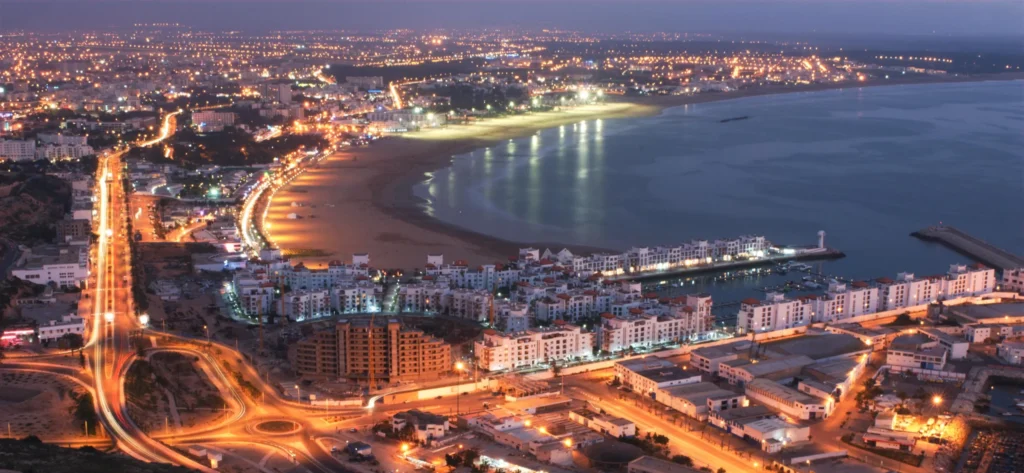
Physical Geography
Morocco covers 446,550 square kilometers, featuring four distinct geographical regions that create the country’s remarkable diversity. The Atlantic and Mediterranean coastlines stretch for over 3,500 kilometers, offering everything from rugged cliffs to pristine beaches. The Atlas Mountains form the country’s backbone, consisting of the High Atlas (including North Africa’s highest peak, Mount Toubkal at 4,167 meters), Middle Atlas, and Anti-Atlas ranges.
The Sahara Desert occupies the southeastern portion, featuring the famous Erg Chebbi and Erg Chigaga dune systems. This landscape offers visitors quintessential desert experiences with camel trekking, overnight camping, and spectacular sunrise viewing opportunities. The Rif Mountains in the north create a Mediterranean microclimate and serve as the country’s agricultural heartland.
Best Time to Visit Morocco
Morocco experiences a Mediterranean climate along its northern coast and Atlantic shores, characterized by mild, wet winters and hot, dry summers. Understanding Morocco’s climate is crucial for Morocco travel planning, as the interior regions feature a continental climate with greater temperature variations, while desert areas experience extreme temperature fluctuations between day and night.
Spring (March-May) offers the best time to visit Morocco with ideal weather across the country, featuring moderate temperatures and blooming landscapes perfect for Morocco tourism. Fall (September-November) provides comfortable temperatures and clear skies, ideal for Morocco travel and all activities. Winter (December-February) brings mild conditions to coastal areas and pleasant weather in desert regions, while summer (June-August) can be extremely hot in interior and desert areas but remains suitable for coastal Morocco destinations.
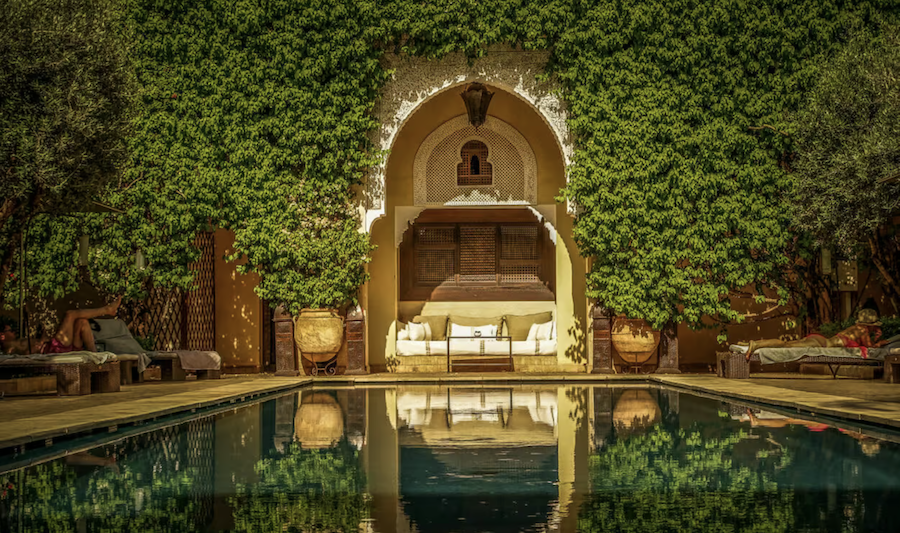
History and Culture
Historical Overview
Morocco’s history spans millennia, beginning with Berber tribes who have inhabited the region since prehistoric times. The Arab conquest in the 7th century brought Islam, which became the dominant religion and cultural force. Various dynasties including the Almoravids, Almohads, Marinids, and Saadians built magnificent cities and monuments that remain Morocco’s architectural treasures.
The French and Spanish protectorates (1912-1956) introduced European architectural styles while largely preserving traditional structures. Since independence in 1956, Morocco has developed into a constitutional monarchy under the Alaouite dynasty, balancing traditional values with modernization efforts.
Cultural Heritage
Moroccan culture represents a unique fusion of Arab, Berber, African, and European influences. The country’s architectural heritage includes stunning examples of Islamic art featuring intricate geometric patterns, colorful tiles (zellige), carved plaster, and cedar wood. Traditional handicrafts including carpet weaving, pottery, metalwork, and leather goods remain integral to local economies.
Moroccan music encompasses various styles from classical Andalusian music to contemporary Rai and traditional Berber folk music, featuring instruments like the oud, qanun, and traditional drums.
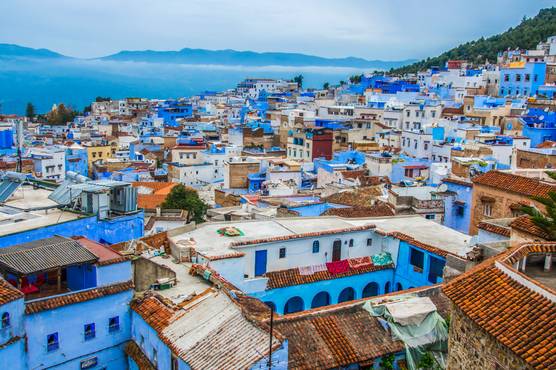
Top Morocco Destinations and Cities
Imperial Cities – Must-Visit Morocco Destinations
Morocco’s four imperial cities served as capitals of various dynasties and showcase the country’s architectural and cultural heritage, representing essential stops on any Morocco travel itinerary.
Marrakech Travel – “The Red City” captivates visitors with its vibrant energy and stunning architecture, making it one of the top Morocco destinations. The medina, a UNESCO World Heritage site, contains the famous Koutoubia Mosque, Bahia Palace, and countless souks. Key attractions include the Majorelle Garden, Saadian Tombs, and the bustling Jemaa el-Fnaa square. Marrakech serves as a gateway to Atlas Mountains and desert excursions, essential for comprehensive Morocco travel.
Fes Morocco – “The Cultural Capital” represents Morocco’s intellectual and spiritual heart, home to the world’s oldest continuously operating university, Al-Qarawiyyin, founded in 859 AD. The Fes el-Bali medina ranks among the world’s largest car-free urban areas, featuring the Bou Inania Madrasa, Chouara Tannery, and numerous mosques showcasing medieval Islamic architecture – a must-see for Morocco culture enthusiasts.
Rabat – “The Capital City” combines historical significance with modern governmental functions. The city features the impressive Hassan Tower, Mausoleum of Mohammed V, and the Kasbah of the Udayas overlooking the Atlantic Ocean. The nearby Roman ruins of Volubilis provide insight into ancient history.
Meknes – “The Versailles of Morocco” was designed as a grand capital by Sultan Moulay Ismail in the 17th century. The city features massive gates including the famous Bab Mansour, extensive palace complexes, and underground granaries.
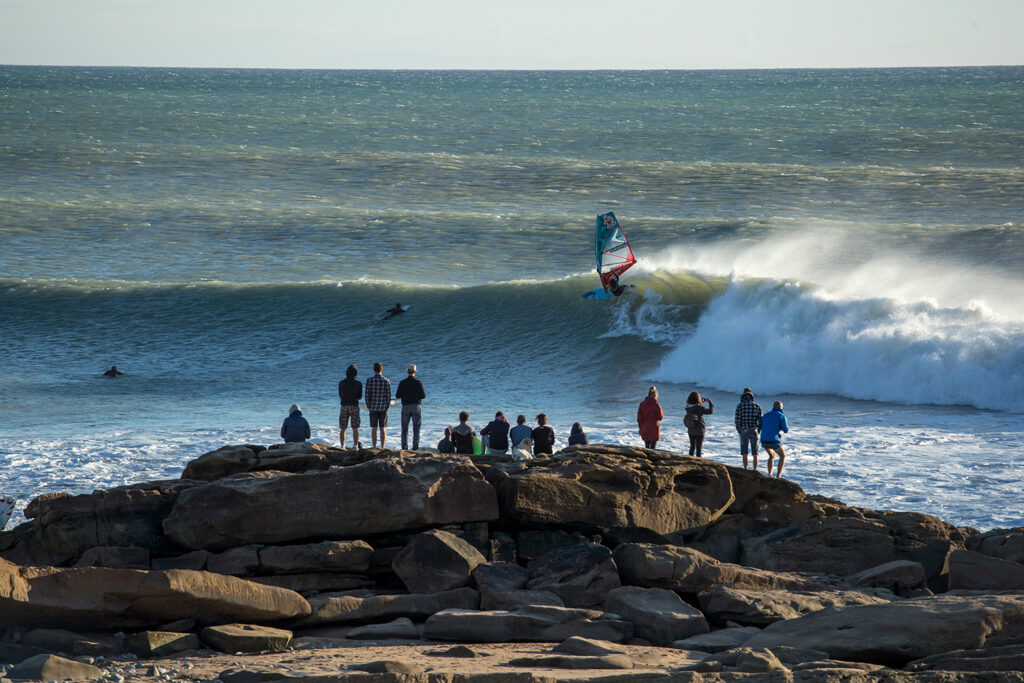
Coastal Cities
Casablanca serves as Morocco’s largest city and economic center. The Hassan II Mosque, one of the world’s largest mosques, stands as an architectural marvel partially built over the Atlantic Ocean. The city’s Art Deco architecture creates a unique urban landscape, while the Corniche waterfront offers beaches and nightlife.
Essaouira – “The Wind City” enchants visitors with its well-preserved 18th-century ramparts and thriving arts scene. This UNESCO World Heritage coastal city attracts windsurfers and kitesurfers worldwide, while the medina offers galleries, workshops, and restaurants specializing in fresh seafood.

Desert and Mountain Destinations
Ouarzazate serves as the “Gateway to the Sahara” and filming location for numerous international productions. The city features the impressive Taourirt Kasbah and provides access to the Draa Valley and desert regions.
Merzouga and Erg Chebbi offer access to Morocco’s most spectacular sand dunes, providing camel trekking, overnight desert camping, and sunrise viewing opportunities.
Chefchaouen – “The Blue Pearl” captivates visitors with its blue-painted buildings and relaxed atmosphere nestled in the Rif Mountains. The village of Imlil serves as the primary base for trekking North Africa’s highest peak, Mount Toubkal.
Planning Your Trip
Visa Requirements and Entry
Citizens of many countries including the United States, Canada, European Union members, Australia, and Japan can enter Morocco visa-free for tourism purposes for up to 90 days. Visitors must present a passport valid for at least six months from the date of entry. Always verify current requirements with official sources, as regulations may change.
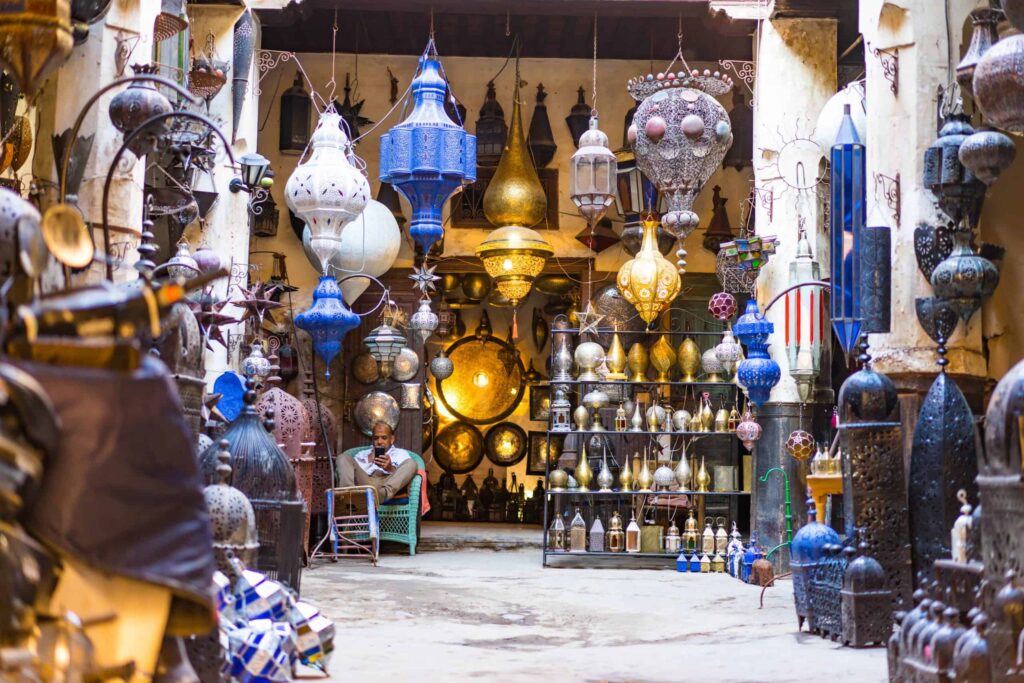
Travel Duration Recommendations
One Week: Focus on imperial cities (Marrakech, Fes) or combine Marrakech with desert experience and Essaouira. Two Weeks: Comprehensive tour including imperial cities, desert experience, coastal areas, and mountain regions. Three Weeks or More: In-depth exploration including off-the-beaten-path destinations and extended trekking.
Transportation in Morocco
Getting There and Around
Morocco’s main international airports include Mohammed V International Airport (Casablanca), Marrakech Menara Airport, and Fes-Saïs Airport. Ferry services connect Spain to Morocco via Tangier, providing vehicle transportation options.
The ONCF rail network connects major cities, with the high-speed Al Boraq train linking Tangier and Casablanca. CTM and Supratours operate comfortable buses connecting all major destinations. Car rental provides maximum flexibility, while petit taxis operate within cities and grand taxis provide intercity transportation.
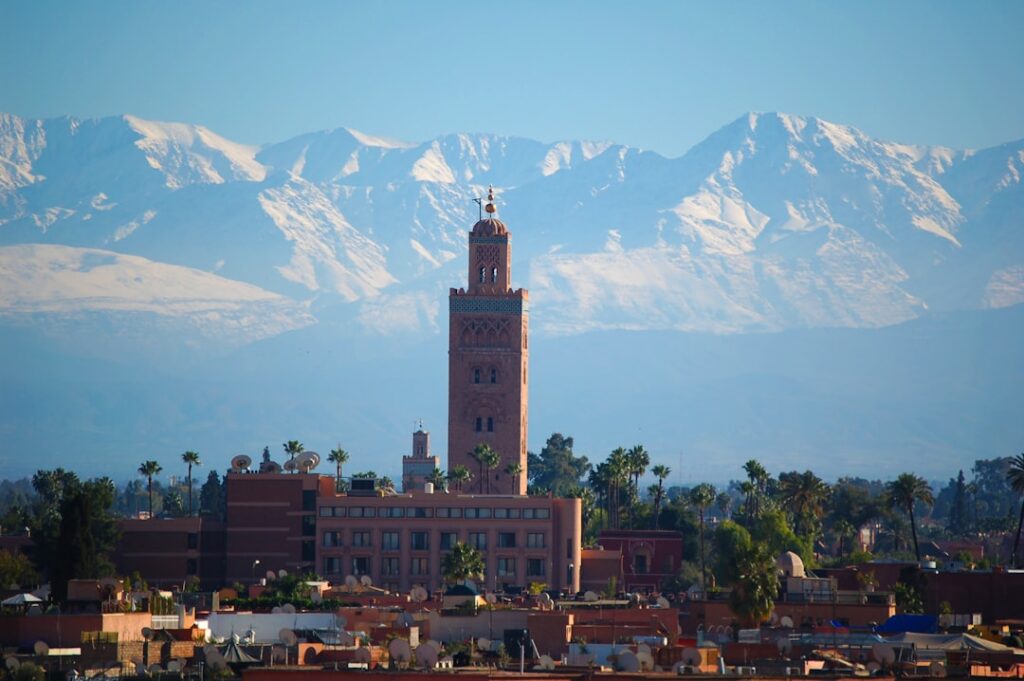
Accommodation Options
Traditional and Modern Stays
Riads are traditional Moroccan houses converted into guesthouses, offering authentic architectural experiences with central courtyards and intricate tilework. Marrakech and Fes feature the largest selections, ranging from budget-friendly to ultra-luxury options.
Kasbahs are historic fortified residences converted into unique accommodations, particularly in southern Morocco. Desert camps in the Sahara range from basic tents to luxury facilities with private bathrooms and gourmet meals.
Morocco also offers world-class luxury hotels, budget-friendly hostels, and guesthouses suitable for all travel styles and budgets.
Moroccan Cuisine
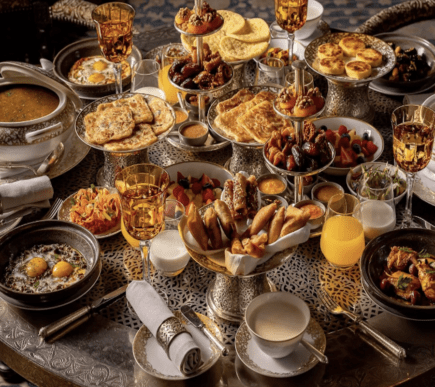
Culinary Traditions
Moroccan cuisine ranks among the world’s great culinary traditions, blending Arab, Berber, Mediterranean, and sub-Saharan African influences. The cuisine emphasizes fresh ingredients, aromatic spices, and time-honored cooking techniques.
Tagine represents Morocco’s most famous dish, cooked in distinctive cone-shaped earthenware pots with variations including chicken with preserved lemons, lamb with prunes, and vegetable combinations. Couscous serves as the national dish, traditionally consumed on Fridays, featuring steamed semolina grains with vegetables and meat.
Pastilla combines sweet and savory elements in thin pastry with chicken, almonds, and spices. Harira soup, made with tomatoes, lentils, and chickpeas, is commonly consumed during Ramadan.
Mint tea (Atay) serves as Morocco’s national drink, prepared and served following specific traditions as a symbol of hospitality. Fresh juices and strong coffee complement the beverage selection.
Activities and Experiences
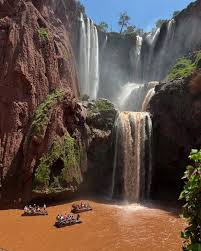
Desert Adventures
The Sahara Desert provides Morocco’s most iconic experiences through camel trekking expeditions, overnight camping in traditional Berber tents, and 4×4 excursions to remote areas. Sandboarding down large dunes offers adventure thrills and photography opportunities.
Mountain Activities
The Atlas Mountains offer trekking opportunities from day hikes to multi-day expeditions, including summit attempts on Mount Toubkal. The Oukaïmeden ski resort provides winter skiing, while various locations offer rock climbing and mountain biking adventures.
Cultural Experiences
Cooking classes teach traditional techniques and spice usage from local chefs. Hammam visits provide traditional steam bath experiences and cultural immersion. Morocco hosts numerous festivals including the Fes Festival of World Sacred Music and Marrakech Film Festival. Artisan workshops showcase carpet weaving, pottery making, and metalwork techniques.
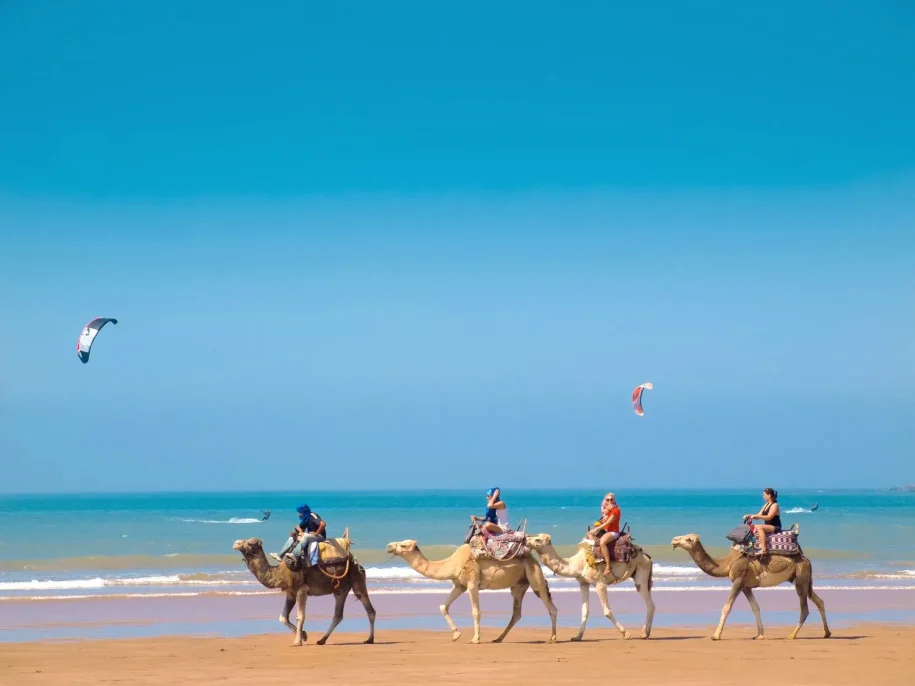
Beach Activities
Morocco’s extensive coastline offers surfing around Taghazout and Imsouane, world-class kitesurfing and windsurfing in Essaouira and Dakhla, and beach resort experiences with swimming and beachfront dining.
Shopping and Souks
Traditional Markets
Morocco’s traditional markets (souks) provide immersive shopping experiences where bargaining remains integral. Each medina contains specialized souks for different products, creating organized marketplace systems.
Popular purchases include Berber carpets and rugs, high-quality leather goods from Fes and Marrakech, metalwork including brass lamps and silver jewelry, distinctive ceramics and pottery, traditional textiles, and aromatic spices including ras el hanout and argan oil.
Successful souk shopping requires patience and negotiation skills, with initial prices often starting at 3-5 times the expected final price.
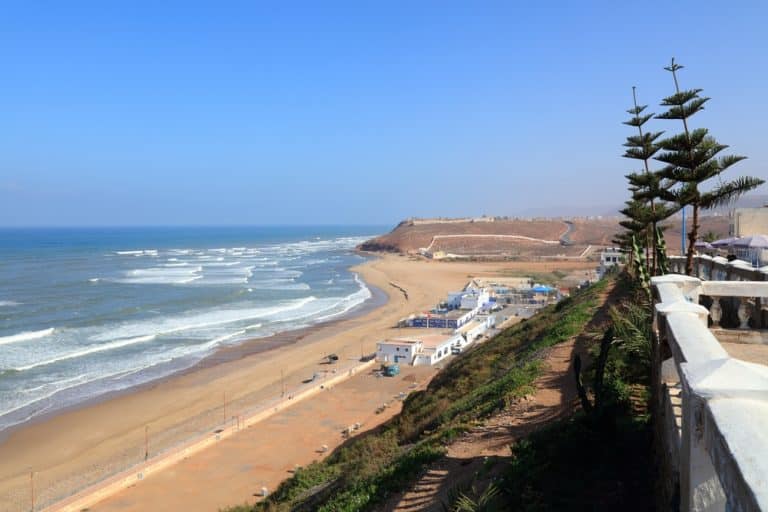
Practical Information
Language and Communication
Morocco recognizes Arabic and Berber (Tamazight) as official languages. French remains widely spoken due to colonial history, particularly in business and tourism. Spanish is common in northern regions, while English is increasingly spoken in tourist areas.
Money and Budget
The Moroccan Dirham (MAD) serves as official currency. Banks and official exchange offices provide currency exchange services, while ATMs are widely available in cities. Credit cards are accepted at upscale establishments, though cash remains preferred for traditional markets.
Budget expectations range from $30-50 per day for budget travel to $50-100 for mid-range experiences, and $100+ for luxury travel. Tipping (baksheesh) forms an integral part of service culture, with 10-15% standard for restaurants.
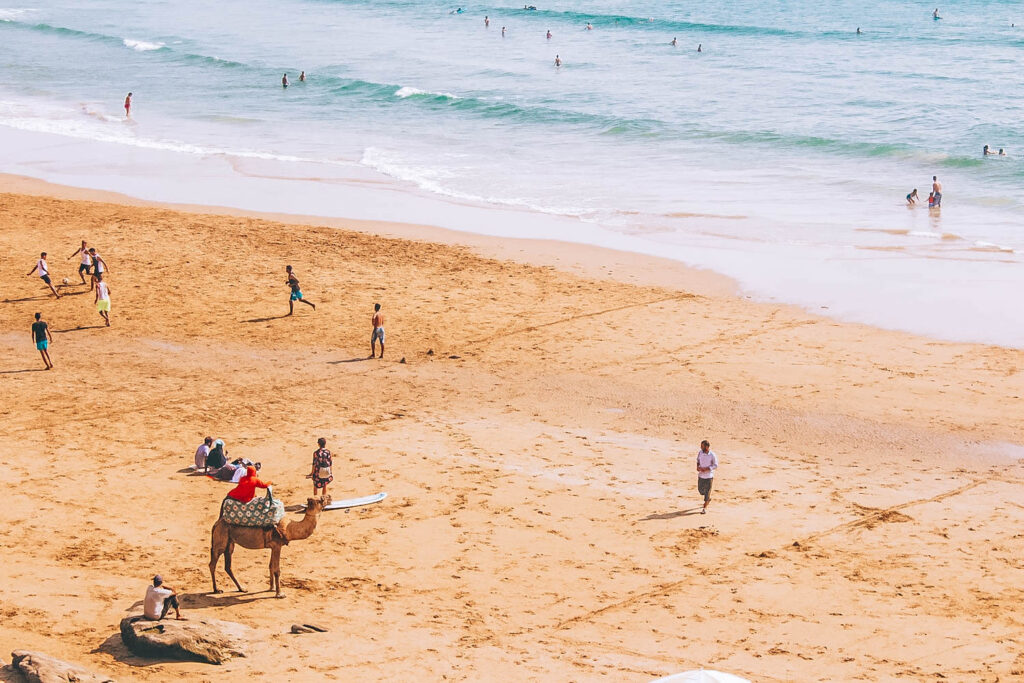
Safety and Health
Morocco maintains relatively high safety standards for tourists with low violent crime rates. Common precautions include securing valuables, using official transportation, and respecting local customs. No specific vaccinations are required; however, routine immunizations should be up to date. Bottled water provides the safest drinking option.
Cultural Etiquette
Islam influences daily life and social interactions. Modest dress demonstrates respect, particularly when visiting religious sites. Ramadan observance affects restaurant hours and public behavior. Photography permissions should be requested, especially for people and in traditional areas.
Morocco uses European-style electrical outlets with 220V power. WiFi is widely available in urban areas, and local SIM cards provide cost-effective mobile communication. The country observes Western European Time with daylight saving adjustments.
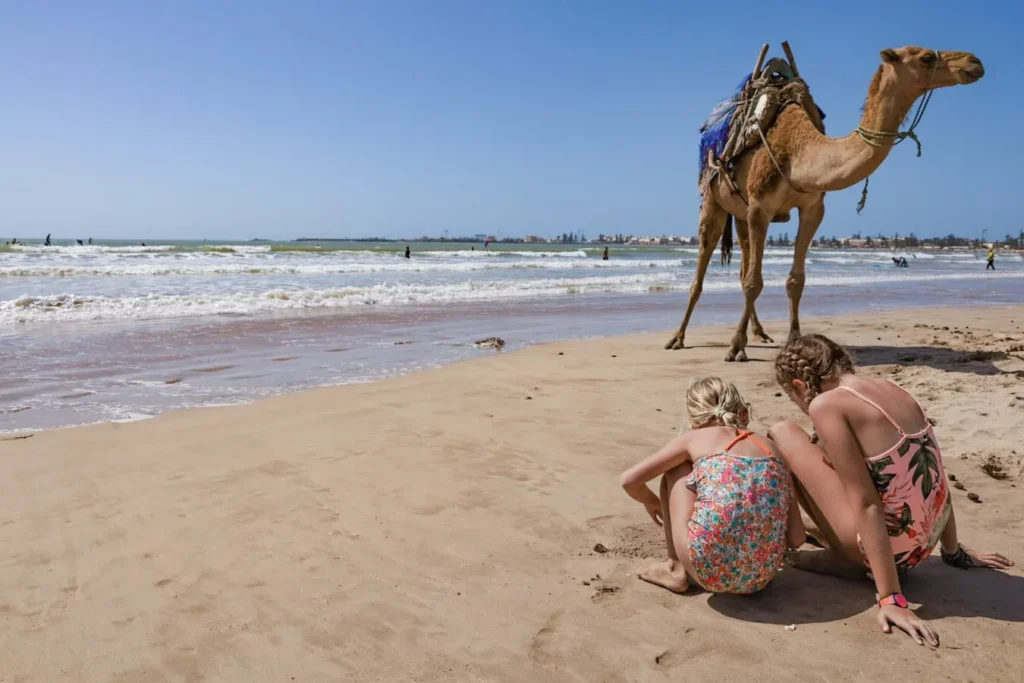
Conclusion
Morocco offers travelers an extraordinary journey through diverse landscapes, rich culture, and profound experiences. From bustling Marrakech souks to serene Sahara dunes, from intellectual Fes heritage to coastal Essaouira charm, Morocco provides something for every traveler.
This guide serves as your foundation for understanding Morocco’s complexities and wonders. The country’s unique position as a bridge between continents creates opportunities for authentic experiences that challenge perceptions and broaden perspectives.
Whether seeking Atlas Mountain adventures, imperial city cultural immersion, Atlantic beach relaxation, or ancient medina spiritual reflection, Morocco delivers experiences satisfying diverse interests and travel styles. The warmth and hospitality of Moroccan people, combined with incredible diversity, ensure every visit reveals new discoveries.
Morocco rewards travelers who approach it with open minds, cultural sensitivity, and willingness to embrace new experiences. The country’s greatest treasures often lie in unexpected encounters and spontaneous cultural exchanges that define meaningful travel experiences.

